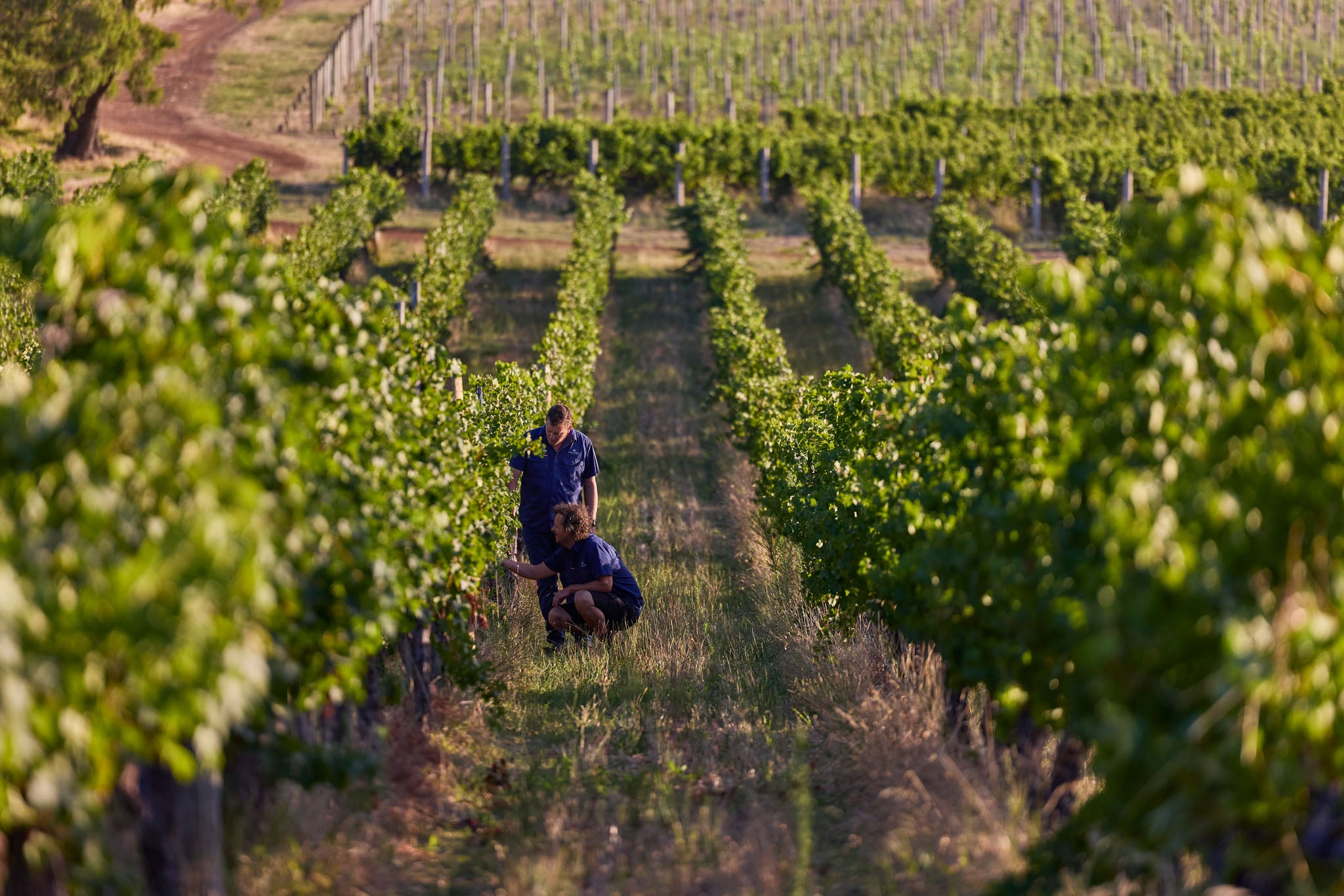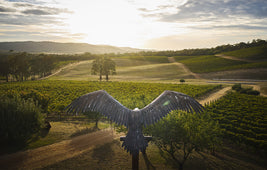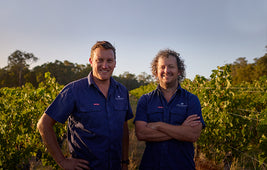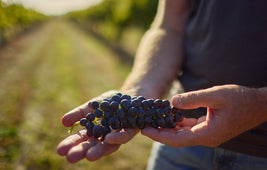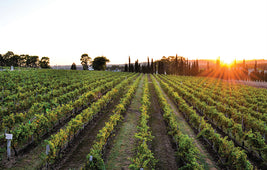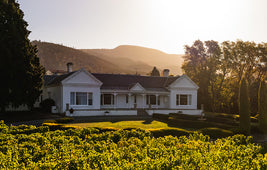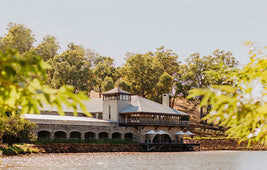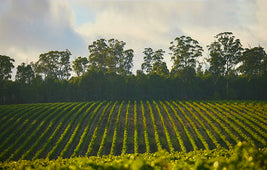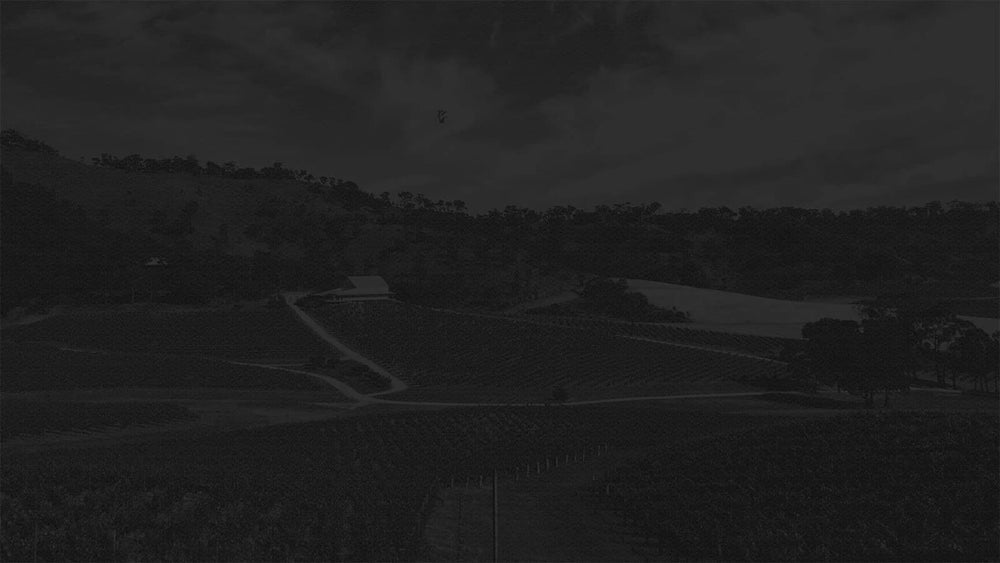All about Chardonnay for International Chardonnay Day

In anticipation of one of our favourite days of the year – Chardonnay Day – we have written about all things Chardonnay.
Make sure to read our blog with a glass of Chardonnay in hand and learn all about Australia's most popular white wine variety.
Where does Chardonnay come from?
Chardonnay is believed to have originated from a small town in the Mâcon region of Burgundy, France called ‘Chardonnay’ and the first records of production are from all the way back to the 1500s.
Chardonnay in Australia
Today, Chardonnay is the fifth most planted wine variety in the world and Australia is the third-largest producer, home to around 10% of the world’s plantings with 22,000 hectares of vines. However, this wasn’t always the case – Chardonnay has had a tumultuous history since its introduction to Australia in the 1830s.
The variety remained relatively unpopular until the 1970s when the bold, buttery style of Chardonnay became a firm favourite. After the frenzied ‘ABC’ (Anything But Chardonnay) movement in the 1990s, winemakers moved towards a more crisp and fruity style of wine and nowadays there are an incredible array of Chardonnay styles to choose from.
Chardonnay is now Australia’s most planted white variety, accounting for over half of the country’s white wine production.
Common Chardonnay wine styles
Chardonnay is one of the most adaptable wine varieties, producing incredible wines in both cool and warm climate wine regions across Australia and the world. It can also be heavily influenced by winemaking techniques, such as oak, lees ageing and malolactic fermentation.
Cool climate Chardonnay tends to be more subtle, showing higher acidity and a lighter body, whereas warm climate styles are bold and rich, with ripe fruit and a full body.
Winemaking influence
Did you know that if you ask any winemaker their favourite varietal to produce, a lot of them will say it is Chardonnay? This is because there is so much fun they have with the winemaking process to influence the complexity and expression of the final wine. Chardonnay is a white variety that can hold up to a range of red winemaking techniques, such as the use of oak, malolactic fermentation and lees aging.
The use of oak barrels (225L) or puncheons (500L) for fermentation and maturation is common for a lot of Chardonnay, adding complexity and texture, as well as nutty and toasty aromas and flavours to the finished wine. Larger format puncheons will have a more subtle impact than barrels.
Neutral stainless-steel vessels are used to produce a more fresh, fruit-driven style of Chardonnay.
Malolactic fermentation is a process that transforms tart malic acid, into a creamier expression of lactic acid. Wines that have gone through partial or full malolactic fermentation will have a rounder and smoother mouthfeel and exhibit buttery and creamy aromas and flavours.
Lees ageing is also a common Chardonnay winemaking practice. Post-fermentation maturation on lees includes residual yeast from fermentation. A short time on lees can help to balance high acidity, 6 to 12 months on lees can impart texture, mouthfeel and body, whereas long term (over 12 months) lees aging can impart a bread-like or brioche note to the wine.
Chardonnay Basics
Common primary aromas and flavours
For cool-climate Chardonnay:
- Lemon/Lime
- Green apples
- Pears
- Minerality
For warm-climate Chardonnay:
- Peach
- Apricots
- Melon
- Butterscotch
- Cashew
Serving temperature
10-13˚C is the ideal serving temperature.
Too cold and the aromas and flavours will be muted, too warm and the wine can lose its freshness and vibrancy.
Food pairings
Fresh, un-oaked styles of Chardonnay pair beautifully with seafood. Try salt and pepper squid or butterflied BBQ king prawns with garlic aioli.
Rich and oaked aged wines can hold up to richer foods and can even be paired with red meat.
Chardonnay From Around Australia
Discover different expressions of Chardonnay from around Australia. From Margaret River and Geographe in Western Australia, to the Pyrenees in Victoria and Tasmania in the south, explore a range of our award-winning Chardonnay below.
Deep Woods Estate 2021 Single Vineyard Chardonnay
“Fantastic aromas of sliced cooked lemons and apple with flint, crushed stone, nutmeg and spiced pear. Medium to full body. Crisp acidity. Razor sharp. Oyster shells. Steely undertones. Tangy acidity. Drink or hold.”
– 96 points, James Suckling 2022
Evans & Tate 2018 Redbrook Estate Chardonnay
“Hand-picked, whole bunch pressed, wild ferment in barrel (35% new), 18% mlf, on lees for 16 months, stirred for 10, before a quiet, untouched 6 months on lees prior to bottling. Crushed cashew, white peach, briny acidity and silky phenolics on the palate. Seamless, creamy and classy, this is perfectly Margaret River, in a perfect year. Lovely stuff.”
– 95 points, Halliday Wine Companion 2022
Millbrook 2021 Single Vineyard Chardonnay
“Delicious, as usual. This is warm and round and welcoming – it has salted yellow peach and Golden Delicious apples by the bagful. The nashi pear and white choc through the finish is close to glorious and leads into jersey caramels ... yes. It all shows how wonderful Geographe Chardonnay can be. It is sunny and bright, even in this cool 2021 vintage.”
– 93 points, Halliday Wine Companion 2023
Dalwhinnie 2020 Moonambel Chardonnay
“Hand-picked fruit, whole-bunch pressed, wild ferment in barrel, matured 9 months in barrel on gross lees. Fogarty Wine Group winemaker, Julian Langworthy, knows a thing or two about chardonnay. Here, he delivers a complex and elegant interpretation, bringing flinty minerals, pristine sherbety lemon and grapefruit with pear, peach skin and almond flavours into a restrained, harmonious whole. Lithe, juicy and delicious now, with some way to go.”
– 95 points, Halliday Wine Companion 2023
Strelley Farm Estate 2019 Chardonnay
This is a bright and expressive Tasmanian Chardonnay produced from 80% Tamar Valley fruit, 10% Coal River Valley fruit and 10% East Coast fruit. Ripe stone fruit and almond spice contribute warmth alongside a refreshing citrus acidity. The palate is richly layered with juicy peach, yellow grapefruit and fresh cashew. A small portion of this wine underwent malolactic fermentation providing a complex, round mouthfeel with just a hint of butter. A more-ish and elegant example of some of the best Chardonnay from Tasmania.
Smithbrook 2020 Single Vineyard Chardonnay
“Sliced green apples and white peaches with some honeysuckle and peach stone character. Full-bodied, layered and flavorful with lots of crushed stone and matchstick to the citrus fruit.”
– 92 points, James Suckling 2022
Take $15 off all Chardonnay purchases! Use code CHARDDAY at checkout to redeem this limited time offer. Offer valid until 27/05/23 on all orders over $100.
Shop all Chardonnay here.





